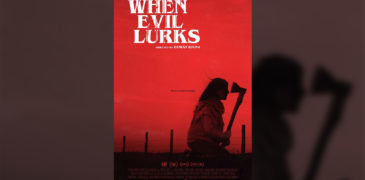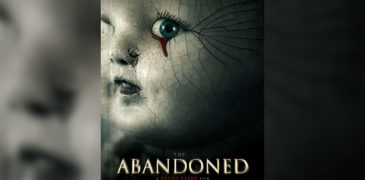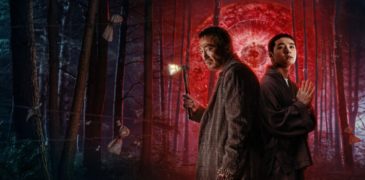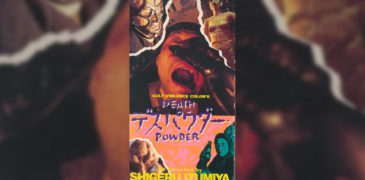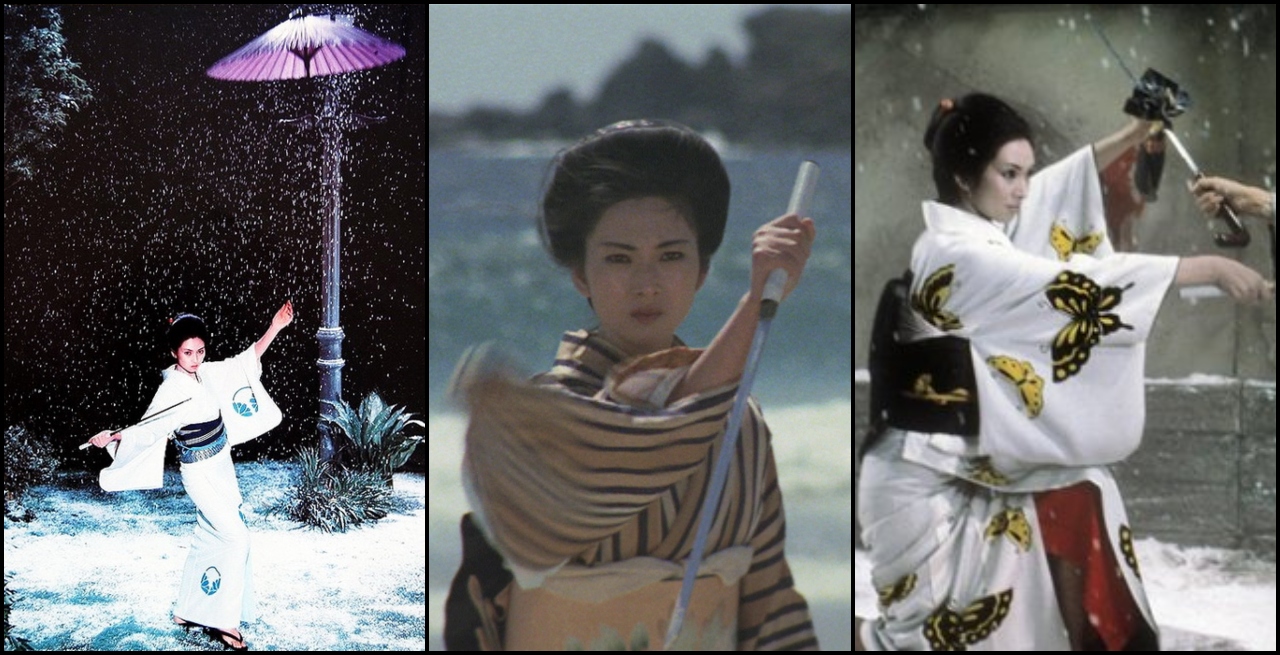
Lady Snowblood is Toshiya Fujita’s 1973 Japanese exploitation flick that inspired the likes of Tarantino’s Kill Bill and countless other directors, featuring the beautiful Meiko Kaji, also famous as Lady Scorpion, in the central role as a wronged woman seeking revenge tenaciously. The choreographed action sequences of vivid brutality – where translucent blood is sprayed fantastically as limbs are severed – and complimentary scenery – such as blood on snow for a strong contrast – both serve the incredible cinematography for a potent backdrop to stylish execution. From beautiful floral groves to scenic seasides in the foreground, combined with elaborate Meiji furnishings for interiors, this period film – referred to as ‘jidaigeki’ in Japanese – is in no way a shallow production, the set design and fashion are strong enough to contest any Spaghetti Western in visual integrity – a tale of revenge in an anarchistic feudal setting where conventional morals of modernity may not apply (as in America’s frontier).
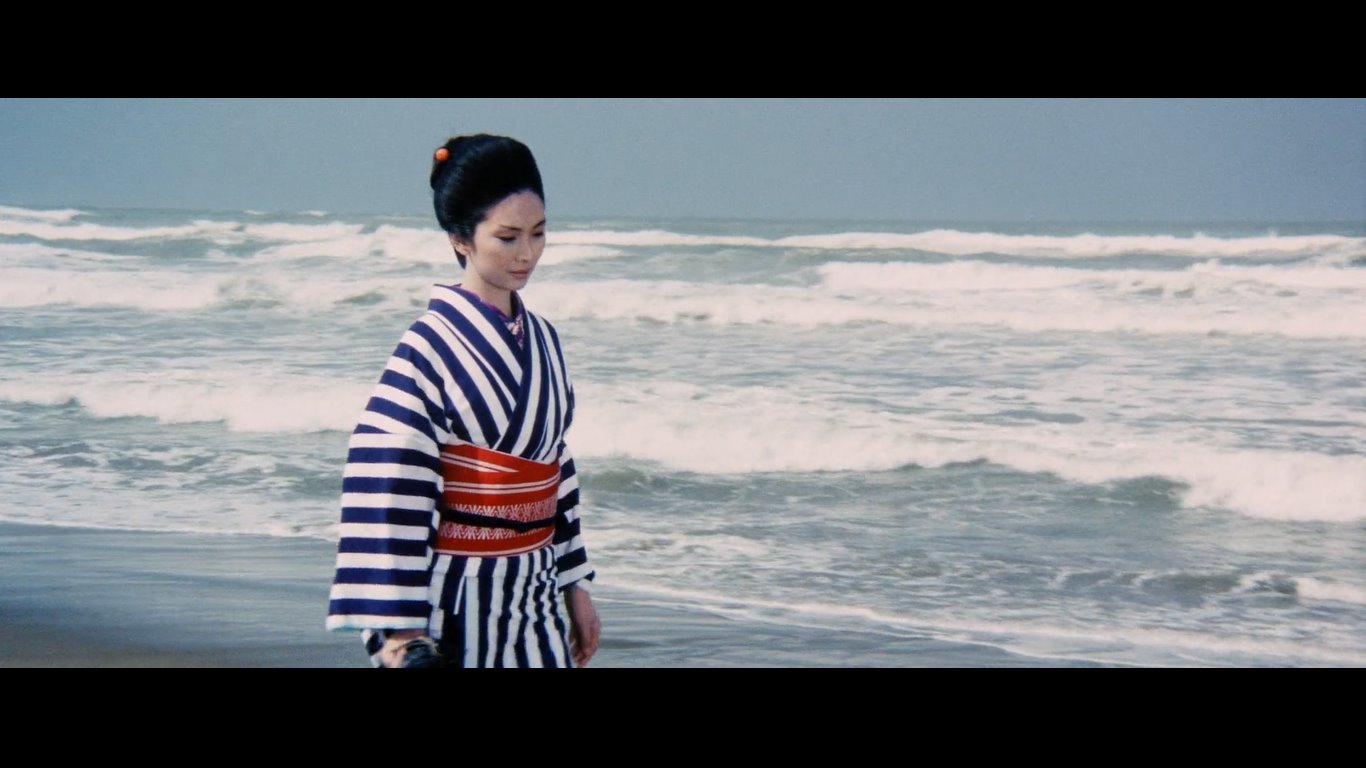
The aesthetic audacity is at the forefront of the production value now having Lady Snowblood memorable as a cult classic. With a narrative secondary to both the tone and style, Lady Snowblood fully embraces violence creatively and the atmospheric grit of a ruthlessly feudal Japan – it is a straightforward revenge plot that’s enthralling for the journey of righteous carnage. As the plot simplistically follows the notion of revenge, so was Lady Snowblood born and raised – a mere vessel of vengeance for her deceased family’s wrath. There’s no deeper allusion through the bloodshed of slashed necks and hacked limbs, Lady Snowblood confidently positions itself as a genre work – a violent revenge-fuelled adventure satisfying one’s sense of personal justice.
The film opens with a fable explaining the circumstances surrounding the birth of our titular character, Yuki Kashima, who’s conceived in prison as a deliberate ploy of her powerless mother – a desperate hope to enable vengeance against those having caused her dire situation. Yuki’s mother was imprisoned for killing one of several criminals who not only crudely assaulted her in every way, they murdered both her husband and son – wrecking any aspiration of family as her meaningful legacy. All that remains is her understandably seething rage and such emotion diverted into engineering her daughter into a destructive vessel of that. Hopeless and subdued from achieving any justice, her only hope is this untainted successor to be trained for such a mission, her daughter an instrument of such carnal bloodlust over more dignified family values since destroyed.
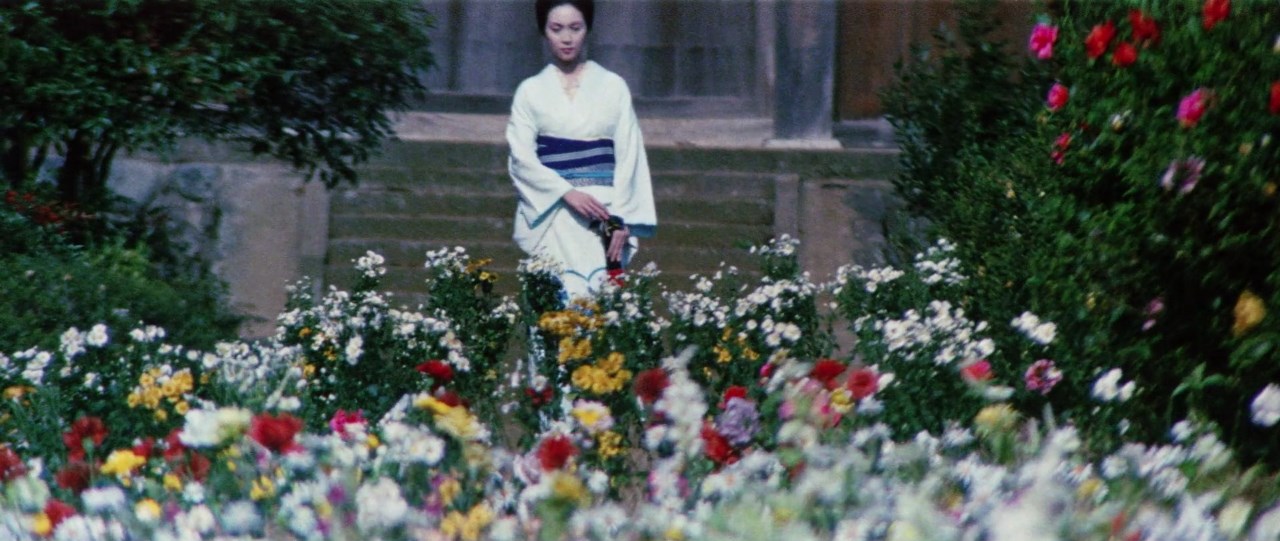
Adorned in a white kimono with starkly black obi for the finale, with a dispassionate expression of composed determination, Yuki Kashima’s graceful movements are precise as her focus – a heft on screen in a splendid performance as a dignified assassin whose purpose is immediately felt as charisma as her distinctive figure blooms through the stark visuals. Lady Snowblood‘s chromatic figure is deservingly iconic in every respect from an energy channeled into her immense aura of acting talent: her refined posture, intense demeanour, laconic responses, soulful look, and confident stride.
Interjected with stills of Kazuo Koike’s original manga that served as the foundation to the film adaptation, Lady Snowblood carries the manga roots proudly and provides an extravagant carnage to indulge our worst instincts – it is undeniably a fun adventure as a pivot into entertainment of guilty pleasure.
More Film Reviews:
In recent years, foreign films have taken the horror genre by storm with such titles as Parasite (2019), Raw (2016), and Veronica (2017). The Argentinian director Demián Rugna‘s 2023 film,… The Abandoned is a 2006 horror thriller, written and directed by Nacho Cerdá with additional writing from Karim Hussain and Richard Stanley. Mostly known as a director of shorts and… TikTok dances emanate eerily around you, a cacophony of booming cackles emit from influencers as they forcefully push their latest merch (that was most likely made in some far-off, exploitative… Konnichiwa! Dia Duit! Wazzup! Straight Outta Kanto here braving the torrential rain and grim humidity of Summer in Ireland to bring you a review of biblical proportions. Originally a casualty… Death Powder is a 1986 Japanese cyberpunk body horror film, written and directed by Shigeru Izumiya. Izumiya is mostly known as a poet/folk singer with a career spanning from the… To say that director Zack Snyder has had one hell of a year would be an incredible understatement, and I mean that in the best way possible. Anyone unfamiliar with…When Evil Lurks (2023) Film Review – A New Take on Possession
The Abandoned (2006) Film Review – Abandon All Hope
#Chadgetstheaxe (2022) Film Review – Cancel Culture Gone Awry (Unnamed Footage Festival 666)
The 8th Night Film Review (2021) – Korean Horror on Netflix
Death Powder (1986) Film Review – Take The Trip, Enjoy The Ride
Army of the Dead (2021) Film Review – Undead Carnage
Some say the countdown begun when the first man spoke, others say it started at the Atomic Age. It’s the Doomsday Clock and we are each a variable to it.
Welcome to Carcosa where Godot lies! Surreality and satire are I.
I put the a(tom)ic into the major bomb. Tom’s the name!
